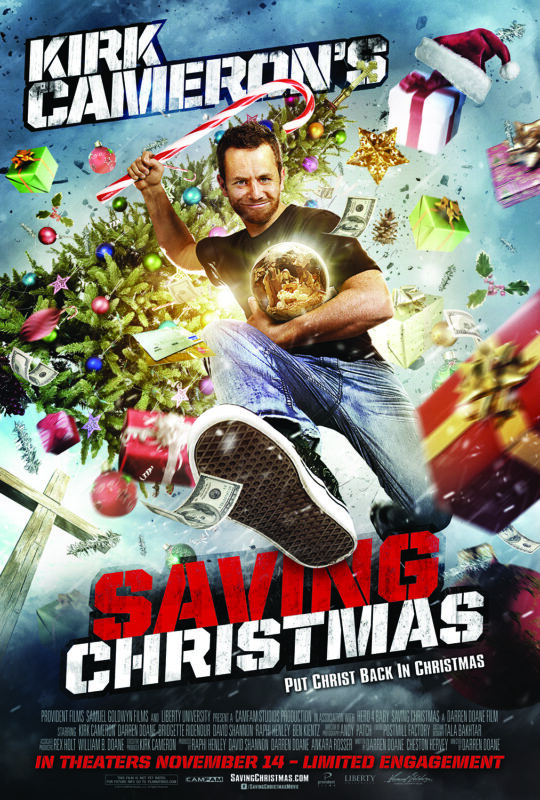Nobody told me the Banshees were this heavy. Songs like “Regal” and “Icons” rival Killing Joke and Public Image Ltd in cathartic intensity and sheer violence, with Susan Ballion’s voice spiking and cleaving through a white wall of guitar distortion like an ice-axe. They’re the record’s easy-listening songs.
Join Hands proves that post-punk was more than the aftershocks of punk, it was its own movement, and probably a musically more interesting one. Punk was the past’s bitch: 50s rockabilly with a MXR Distortion Plus fuzzbox. Here we’re getting the future, even though we might not want it. You can always predict what the next chord on a Sex Pistols or Ramones song is going to be. You can’t do that on any song here. It’s strange and unfamiliar.
Which is not to say that Join Hands isn’t in debt to the past. “Join hands” is just another way of saying “Come Together”, after all (though now the cover has four soldiers, instead of four self-hating Liverpudlians). Side B contains a reworking of “Oh Mein Papa” (which Eddie Calvert got to #1 in 1954, three years before Ballion’s birth). Musically, it isn’t far removed from what Bowie and Iggy Pop were doing in Berlin in 1977. And on the (improvised) fourteen minute long “The Lord’s Prayer”, Siouxsie Sioux’s lyrics become a filmstrip of old nostalgic references: Bob Dylan’s “Knocking on Heaven’s Door”, Mohammed Ali’s trash talk, nursery rhymes, and the Beatles again (“twist and shout”).
But these images of the past are invariably mocked and desacralized here, their bodies twisted on the torture equipment of Steven Severin’s bass and John McKay’s guitar while High Inquisitor Ballion lays into them. “We have ways of making you talk.” Punk rock was about breaking away from modernistic rock practices and returning to its roots. But in post-punk, the past isn’t deified, it’s investigated and interrogated.
“Icon” has the album (and movement’s?) defining lyric: the church-spire ablaze. Faith tested against flame, and losing. In the real world, John Lennon was shot and Muhammed Ali got Parkinsons and innocuous institutions (parents, schools, and so forth) were sources of misery and even horror for many of us.
And even if the past really was good, you can’t hold onto its pleasures. Your mom and dad are growing old and forgetting your name, your church went into arrears, and your childhood playground was bulldozed long ago. And you’ve changed, too. Your innocence is gone, and you will never see the world as you once did. Time’s geodesic points only forward, and those who try to remain in the past find its memories turning to a pit of gray ash under their tongue.
Join Hands carries a grim message like a lash: there are no roots to go back to, not for rock music or anything else. There is only one possibility left: cold, scientific knowledge. If we never feel pleasure again, we may as well understand what was going on under the hood of concepts like “God” and “health” and “family”. That’s the artistic approach of post-punk: to dissect everything, and not care if it dies in the process.
The Banshees are often more interested in creating spectacles than songs. “Icon” and “Playground Twist” show them at their best: fiery, memorable tracks with huge hooks and apocalyptic thunder. The first is a stately British apocalypse. It has a world inside it, burning from horizon to horizon. The second suspends the listener in a maelstrom of flanging guitar sound and whiplashing meter changes. You feel physically destabilized when you listen to it, as though the ground is collapsing under you.
It breaks ranks with other postpunkers in important ways: the lyrics are precise and literal. Siouxsie feels sincere in her writing, which a refreshing in a genre already known for cloying, unctious irony. “Playground Twist” takes odd material (getting shoved around on a cruel playground where nobody’s your friend) and makes it seem genuinely horrible, the way a child would feel it. The Banshees mean every word here.
At times they go on a bit long, becoming ships lost in squalling noise. I generally skip “Placebo” and “Premature Burial”. They’re just empty boxes of guitar skronk. Occasionally Ballion’s lyrics strike dead notes, particularly on “”Mother / Oh Mein Papa”, where she becomes an angry Dr Seuss. (“The one who keeps you warm / And shelters you from harm! / Watch out she’ll stunt your mind / ‘Til you emulate her kind!”)
Post-punk worked best as a musical stress test. It was about flinging songs into walls, and seeing how and where they break. The subgenre was about exploring limits and failure points, and part of that is wearing out the listener’s patience (and defying their expectation for catchy melodies, etc). That happens a lot here, because Siouxsie and the Banshees want it to happen, but that doesn’t make it any more tolerable.
Strangely, the fourteen minute “The Lord’s Prayer” is among the album’s strong points. The music just explodes out endlessly like a rolling pyroclastic flood, leaving Ballion performing an audacious tightrope-walker’s act over a sea of magma. She pulls ideas out of her head and shrieks them like a human klaxon. I don’t know to what extent it was inspired by “Sister Ray” by the Velvet Underground, but I think the answer is “heavily”.
In some respects Join Arms has aged, in others it hasn’t at all. It’s a backward-looking piece of experimentalism, but the distant past is as unfamiliar as the future. And its focus on World War I is an interesting choice, because it’s one of the clearest clashes of romanticism and realism that culture ever produced. The Armistice that ended World War I was signed at 5:12 am on the 11th of November, but the ceasefire was delayed until 11:00am. This gave the Armistice a gravitas, it was felt. Poets would be able to write that the war ended on the 11th hour of the 11th day of the 11th month. Two thousand seven hundred and thirty-eight additional men died so this could happen.
Everyone suddenly burst out singing;
And I was filled with such delight
As prisoned birds must find in freedom
Winging wildly across the white
Orchards and dark green fields; On; on; and out of sight.
Everyone’s voice was suddenly lifted,
And beauty came like the setting sun.
My heart was shaken with tears and horror
Drifted away ….. O but Everyone
Was a bird; and the song was wordless;
The singing will never be done.
- Siegfried Sassoon, “Everyone Sang”
No Comments »
I saw this film for Christmas, the most wonderful time of the year.
One advantage of me being Australian (aside from the whole walking upside down thing, which gets old fast) is that I have an outsider’s view on American entertainment. For example, I don’t know who Kirk Cameron is. A sitcom actor, or something. When Saving Christmas came out and was hammered by critics, many reviews took the line of “haw haw! It’s Mike Seaver from Growing Pains!” I didn’t care about that stuff. I judged the film on its own demerits.
It’s terrible. Silver linings, though: we’re still celebrating Christmas in 2022, which means Kirk’s crusade to save the holiday was a success. I wonder how he did it?
Don’t be fooled by the action-packed cover: Saving Christmas is a vlog of Kirk Cameron sitting in front of a camera, gesturing with his simian hands, his ghastly chimp-like visage twisting with rancid condescension as he explains the meaning of Christmas to all of us dumb idiots. I have never felt so patronized by a stupid person. He has the energy of an uncle explaining that airplanes fly by flapping their wings.
He knows how to save a buck, I’ll give him that. The movie has two sets: “some dude’s house”, and “some dude’s car”. Occasionally he spices things up with “B-footage” that looks like it came from a stock footage site. This film cost literally dozens of dollars to make, and I hope it earned back every penny.
Is this even a movie? In 2017 it barely passed muster. In 2022 it more resembles a high-effort Youtube video by someone called “The Libtard Crusher” whose avatar is Trump throwing Fauci out of a helicopter. All it lacks is a crudely animated furry character who looks smug when he makes a point…well, it has Kirk Cameron, now that I think of it.
So what dubious message does Craptain Kirk have for us?
It’s not “Christmas is overcommercialized!” Kirk is all for commercialization. “Don’t buy into the complaint about materialism during Christmas. Sure, don’t max out your credit cards or use presents to buy friends, but remember, this is a celebration of the eternal God taking on a MATERIAL body. So, it’s right that our holiday is marked with material things.”
He argues – unconvincingly – that “secular” traditions (Christmas trees, nutcrackers, Santa Claus) are Biblically-based. Nutcrackers? They’re soldiers, and Herod had soldiers. Christmas trees? Jesus was crucified on a cross made of wood, which comes from trees. Baubles? They represent the fruit in the Garden of Eden. And so forth.
It’s a simple formula. Is $THING part of Christmas? Just Ctrl-F search for $THING in the Bible, and there you go. Anything you like can be a Biblically-approved Christmas tradition. “Like a computer wrote it” is a common criticism lobbed at movies that are formulaic or uninspired. Saving Christmas goes further: it’s the world’s first movie that could have been written by a one-line Bash script.
Winter? Well, God created the winter solstice. When he’s in a pinch, Cameron falls back to the “God made it” argument, which kind of makes the rest of the film unnecessary, because then everything is part of Christmas.
And this distresses me, because my family had a disgusting proctopaedophiliac Christmas tradition called “oobleklaart”. It’s a heinous sex act, banned in 31 countries and counting, involving a monkey, an unripe rambutan, a power drill, and…ugh…just thinking about it makes me shudder. Those poor gerbils…
Anyway, if Kirk is correct, oobleklaart is authentically part of Christmas, because the 27 separate items and ingredients necessary to perform it (we’ll ignore the plutonium-239, which is man-made) all come from God. Is this true? Is oobleklaart Christmas? Say it isn’t so, Kirk.
In general, I’m not on board with attempts to make Christianity hip and happening.
Firstly, none of these people would recognize “hip” if theirs was smashed by a sledgehammer. At the end there’s a rapped version of “Angels We Have Heard On High”, which is a risky move for a group of actors who have never heard a rap CD that didn’t have “CLEAN VERSION” on it. When they dance, they flail like electrified corpses.
Christianity should transcend cool. The Bible has a certain dignity to it. It’s not a trite or silly book. Trying to tie it up with a bunch of toys doesn’t even reach the level of sacrilige. It speaks to a cultish obsession with dopamine that’s as secular as it gets. “Don’t ask questions! Just consume product and then get excited for next product!” Christmas may survive commercialism. It may not survive Kirk Cameron.
No Comments »
Ambien is so-called because it gives you a morning (a.m.) that’s good (bien), Warfarin is thus-titled because it was developed by the Wisconsin Alumni Research Foundation, Lasix is accordingly-dubbed because it lasts six hours, Premarin is hencely-christened because it comes from the urine of pregnant mares, Adderall is consequently-designated because it relies on an organic compound found only in European snakes, Prozac is repercussionly-cognomenized because the chemist was into High School Musical. I started making these up.
So why is this website called Coagulopath?
Well, because of a small but extremely important fact about myself that I’ve never revealed to anyone. A secret, if you will. My time is now short, so I’ve decided to tell the world at last, in the form of a SHA-512 hash.
56bfdd67f46f62375b35cc9cce0a7b75
f2716bfdc98542709c4306c91e2084ee
4b6cb44951373ba5ef6f51b1b0875602
f710ee643fdde00f63aaebe4b7e79aaf
Now you know.
In 2021 I built a PC. I wanted it to be weird, with personal touches.
Parts list:
- AMD Ryzen 9 5900X 12-core processor
- MPG B550 Carbon Wifi motherboard
- Gskill 3600 32 GB DDR4 x 2 (64 GB total)
- RTX 2080 OC Super
- Lian Li 120MM Unifans x 5
- Thermaltake 360mm AIO
- Thermaltake Toughpower GF1 ARGB 850W Gold PSU
- Some other decorative parts
The case was the infamous AZZA CSAZ-804 :

This is the first mass-produced case with a pyramid shape. The AZZA Pyramid also comes in a a “V” edition (with darker paint and extra I/O options), a “Mini” edition (for mini-ITX builds), and a large edition. I now wish I’d gotten the large one. It has the same overall dimensions (589 mm x 490 mm x 490 mm) with differently-spaced cutouts for a RTX 30** series GPU.


Content advisory: many things about this build are just bad. Don’t copy this unless you are prepared to face terrible consequences.
Problems
- My GPU is sucking air through a glass panel
- Many of my installed games are bad, receiving 6/10 or lower from GameSpot
- My radiator pump is the highest point of the loop, causing air bubbles to gather in the pump (potentially shortening its lifespan, see here.)
- The case thermals are sucking of horse cock in general, with too much glass and not enough air
- I have Argus Monitor and Speedfan installed at the same time even though it says not to
The PC is designed as a showpiece, not to perform well. That said, I got 240 FPS in the Apex Legends training range, and I was only about ~40C over ambient on a hot summer day: below thermal throttling for the Ryzen.
First, I unboxed the case, which was huge. The box seemed big enough to hold my entire life. It’s the heaviest case I’ve yet built in: with no parts it’s 14.1 kg / 31.1 lbs of cold-rolled steel and tempered glass. I don’t recommend dropping it on your foot.

The case has two levels. A “basement” where you put the PSU, radiator, hard drives, and cables, and an upper level that the motherboard mounts to.

It comes with a number of accessories: a riser cable for vertical GPU mountings, and a couple of docks for hard drives. I ended up using relatively few of these. I have no use for 2.5″/3.5″ HDDs and I mounted the GPU the standard way.
The “logical” way to set up this case would be to draw air from the bottom and expel it out the top. I used a 360 radiator, and because I wanted the fans to be visible, I set them in pull configuration. Usually, a gap of about 5cm is necessary for a case to ventilate (as found by Gamers’ Nexus Steve Burke). The AZZA satisfies this requirement.

The Unifans were great to work with. They connect in series by physically slotting together, like Lego bricks. The only disadvantage is that they use a proprietary Lian Li cable type and can’t connect to 4-pin / 5v RGB headers. I ended up with a mess of cables underneath the motherboard compartment.
At the top of the pyramid there’s a preinstalled AZZA-branded 120mm fan, which I replaced with another Unifan. I wonder why Azza didn’t include additional screwholes and brackets for 140mm and 200mm fans, which would allow you to put the fan lower down.
Why would you want to do this? Geometry. The 120mm fan has to be very close to the top of the pyramid, meaning the airflow misses the four sidecut vents. Additionally, there are possible static pressure problems, where the fan doesn’t just draw air from above the components (as is ideal) but also from the sides. If you did Schlieren photography of the case, I suspect you’d see a massive mushroom-cloud blob of heat just hanging over the motherboard. But again, this is a showcase. And a show case.

I used a lot of RGB peripherals, including RGB tape (which I ended up looping around the base of the pyramid), Lian Li Strimer Plus V2 24p + 8p*2 cables. To connect all of it I used one of these.
The engraved RGB backplate for my RTX 2080 OC Super came from JM Mods. It would have looked better without the mirror finish, but I didn’t think of that.

I also installed the Thermaltake power supply fan-side down, so the T logo is upside down. Triggered yet, libtard?
The cables under the motherboard tray looked pretty bad. They’re still a WIP.


Anyway, the Coagulopath PC is built. I have many more plans for it.

No Comments »














